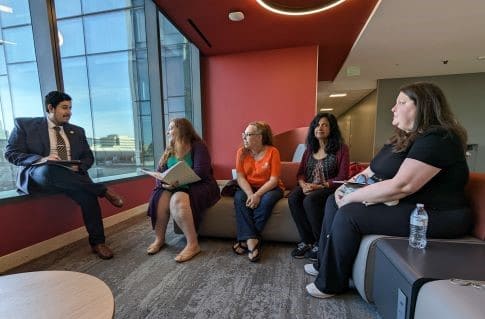WHAT IS FORCED MARRIAGE?
In a forced marriage, one or both parties do not give full, free consent. They might be pressured or coerced to marry – or to stay in a marriage – through violence, threats, grooming, fraud or other methods.
Unchained has found that parents typically play an important role in facilitating a forced marriage, which makes escape even more difficult and adds a deep sense of betrayal to an already traumatic situation.
Forced marriage is recognized globally as a form of modern slavery and as a harmful practice that disempowers women and girls in particular and hinders gender equality. It is recognized nationally as a human rights abuse.
Forced marriage also happens to individuals of other genders. Unchained even has seen parents use forced marriage as a form of conversion therapy.
A forced marriage can happen at any age.
Even if both parties enter a marriage with full, free consent, the union can later become a forced marriage if one or both parties are forced to stay in it.
Within a forced marriage, individuals typically lose all sexual and reproductive rights, forced to have unprotected marital sex not only on their wedding night but again and again – a lifetime of rape. This inevitably leads to forced parenthood, with individuals repeatedly forced to endure pregnancy, childbirth and childrearing without their consent.
Forced marriage also often means myriad other forms of violence and abuse. Many survivors are stripped of financial rights too, and forced to remain financially dependent on their spouses, often resulting in a lifetime of domestic servitude.
Forced marriage can be a form of human trafficking.
Divorce can seem impossible for someone in a forced marriage, especially in communities where divorce is viewed as shameful. Those trafficked to the U.S. as part of a forced marriage often are further constrained by their immigration status if they try to seek a divorce.
Individuals who try to resist or escape a forced marriage often risk honor violence, including ostracism.
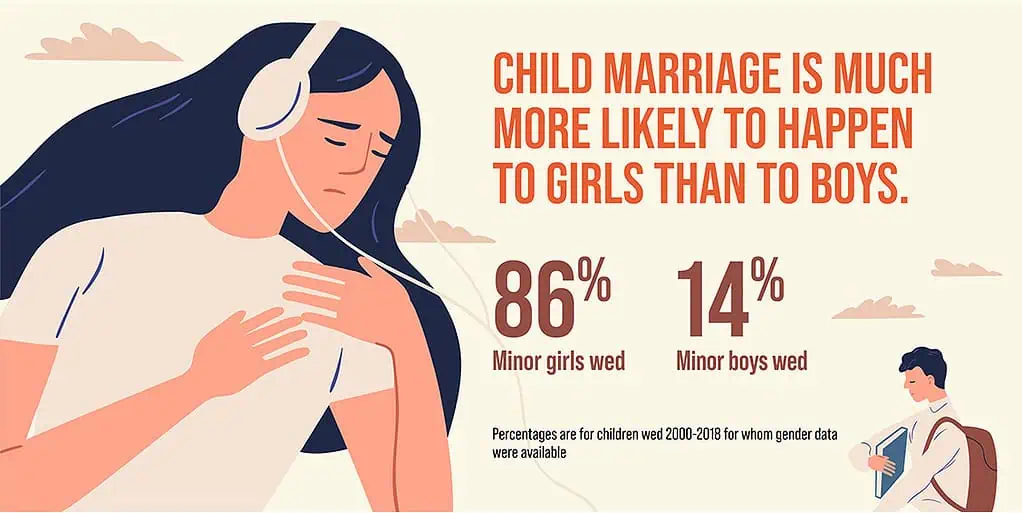
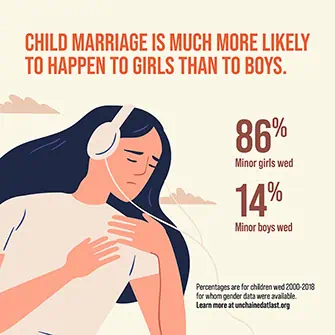
HOW IS FORCED MARRIAGE DIFFERENT FROM ARRANGED MARRIAGE?
In an arranged marriage, both parties consent to have their marriage arranged. The difference between an arranged marriage and a forced marriage is supposed to be the difference between consent and coercion.
However, consent can easily cross over into coercion. What if one or both parties “consent” to an arranged marriage because that is the only form of marriage they have seen, or because they were raised to believe someone else must choose whether, when and whom they marry? Is that consent or coercion? What if they “consent” when they are too young or inexperienced to understand what that means? What if they are rushed to give an answer before they can fully think through their options? What if they are bribed? What if they are tricked? What if they are threatened? What if they are locked up, beaten or shunned?
If one or both parties do not give full, free consent, the marriage is forced, even if a family or community labels it “arranged.”
WHAT IS CHILD MARRIAGE?
In a child marriage, one or both parties are under age 18 when they enter the union.
Child marriage can easily be forced, because children have limited legal rights and therefore face overwhelming legal and practical barriers if they try to escape or resist an unwanted marriage. The United Nations Office of the High Commissioner for Human Rights categorizes all child marriage as forced marriage.
Child marriage destroys nearly every aspect of a girl’s life; indeed, it is recognized globally as a harmful practice that disempowers women and girls in particular and hinders gender equality. The U.S. State Department considers forced child marriage a form of child abuse and has called child marriage a human rights abuse.
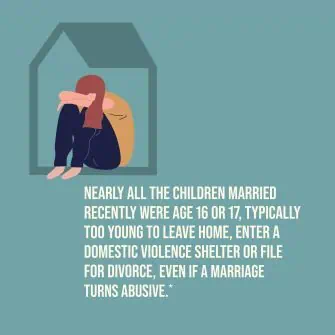
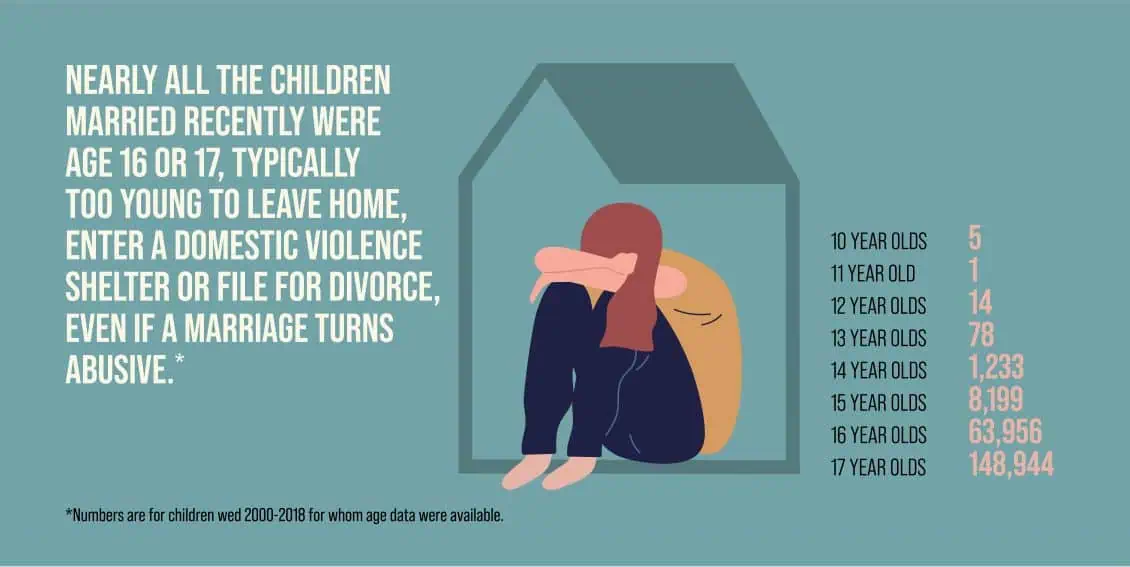
Child marriage often undermines statutory rape laws. In most U.S. states and under federal law, sex with a child that would otherwise be considered rape – in some cases, felony rape – becomes legal within marriage.
Child marriage can also be a form of human trafficking. Due to loopholes in immigration laws, thousands of American girls are being trafficked legally for their citizenship, forced to marry adult men from overseas so the men can get a U.S. visa. Similarly, American men are legally importing child brides from overseas.
Learn more here about child marriage in the U.S.
HOW PREVALENT ARE FORCED MARRIAGE AND CHILD MARRIAGE?
Globally, an estimated 22 million people were in a forced marriage as of 2021. More than 650 million women alive today were married as children.
In the U.S., more than 300,000 children were married since 2000, and most were girls wed to adult men. At least 60,000 of those marriages occurred at an age or with a spousal age difference that should have been considered a sex crime.
Little research has been done on forced/arranged marriage of adults in the U.S., so its full extent here remains unknown.
WHAT RELEVANT LAWS AND POLICIES ARE IN PLACE?
The U.S. is one of 193 countries that have promised to eliminate forced and child marriage by year 2030, under United Nations Sustainable Development Goal 5.3.
However, the U.S. has done little to address, study or even acknowledge domestic forced marriage. The resulting misconceptions of the extent, contexts and impacts of forced marriage in the U.S. leave the nation unable to keep its promise to end this human rights violation by 2030.
The U.S. also has done little to address, study or acknowledge domestic child marriage. Much of what is known about the extent of child marriage in the U.S. is from Unchained’s groundbreaking research, and much of the policy change surrounding child marriage in the U.S. has been a direct result of Unchained’s relentless advocacy.
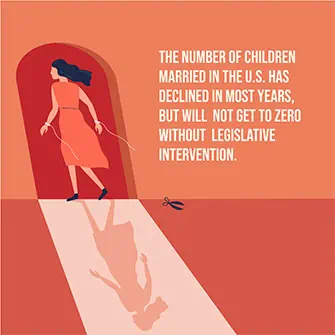
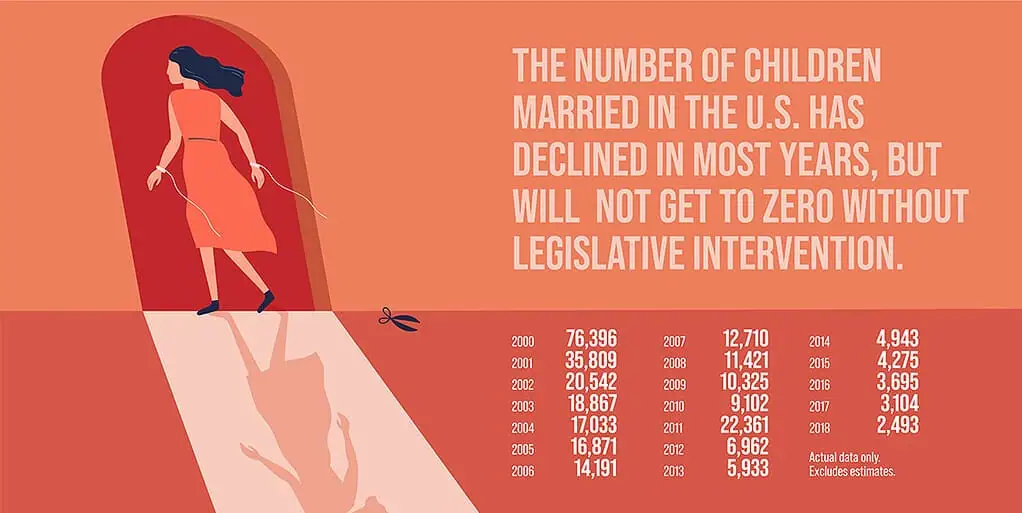
Despite the U.S. promise to end forced and child marriage by year 2030, few laws and policies are in place to prevent or punish forced marriage, which is not a specific crime in most U.S. states. Child marriage, too, remains legal in most of the U.S. (something Unchained is slowly changing, state by state).
While marriage age is set at the state level, the federal government also is at fault for the ongoing child marriage problem. Unchained has identified 11 federal statutes that not only allow but actively encourage child marriage.
Unchained is determined to keep the U.S. to its promise to end forced and child marriage in the U.S. by year 2030. Unchained is on the frontlines, providing crucial services to help individuals escape; at the same time, Unchained conducts research, educates policymakers and the public, recruits allies, builds grassroots support and pushes for social, policy and legal change.
As part of these efforts, Unchained started and now leads a growing national movement to pass legislation to make the marriage age 18, no exceptions, in every U.S. state, territory and district and at the federal level.
Unchained has partnered with Columbia University researchers on a research and action project called MOVE to study and combat forced marriage, forced marital sex and forced parenthood in the U.S.




